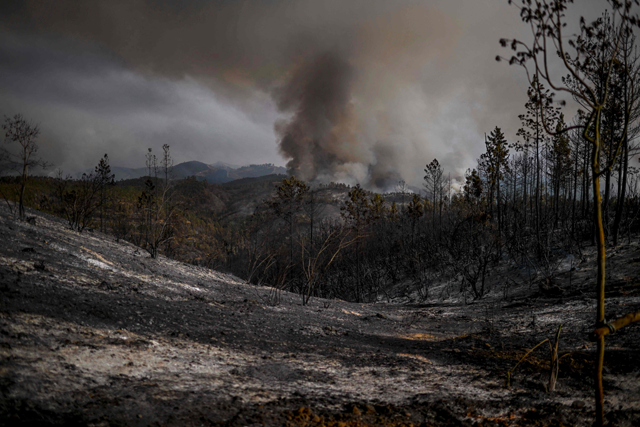You are here
Climate change, El Nino drive hottest June on record
By AFP - Jul 06,2023 - Last updated at Jul 06,2023

Beijing was hit by a heatwave in late June, prompting authorities to issue an alert (AFP photo)
PARIS — The world saw its hottest June on record last month, the EU's climate monitoring service said on Thursday, as climate change and the El Nino weather pattern looked likely to drive another scorching northern summer.
The announcement from the EU monitor Copernicus marked the latest in a series of records for a year that has already seen a drought in Spain and fierce heatwaves in China and the United States.
"The month was the warmest June globally at just over 0.5ºC above the 1991-2020 average, exceeding June 2019 — the previous record — by a substantial margin," the EU monitor said in a statement from its C3S climate unit.
Temperatures reached June records across northwest Europe while parts of Canada, the United States, Mexico, Asia and eastern Australia "were significantly warmer than normal", Copernicus noted.
On the other hand it was cooler than normal in western Australia, the western United States and western Russia, it said.
'Hottest day ever'
It was the latest in a series of heat records over recent years, reflecting the impact of global warming driven by greenhouse gases released from human activity.
Copernicus also confirmed an earlier indicator from US meteorologists that Tuesday was the hottest day ever recorded. Preliminary data showed a global average temperature of 17.03°C that day, beating another record already set on Monday, it said.
For June, Copernicus noted that sea surface temperatures were higher globally than any previous June on record, with "extreme marine heat waves" around Ireland, Britain and the Baltic.
Antarctic sea ice reached its lowest extent for June since satellite observations began, at 17 per cent below average.
C3S scientist Julien Nicolas told AFP the June record was driven largely by "very warm ocean surface temperatures" in the Pacific and Atlantic due to El Nino, a periodic warming phenomenon.
"On top of that is this warming trend of the ocean absorbing 90 per cent of heat released by human activity," he added.
The global temperature was 0.53°C above the 30-year average at an average of 16.51°C he calculated.
"June 2023 is way above the others. This is the kind of anomaly we are not used to," Nicolas said.
Petteri Taalas, secretary-general of the UN's World Meteorological Organisation, warned on Monday that El Nino "will greatly increase the likelihood of breaking temperature records and triggering more extreme heat in many parts of the world and in the ocean".
He urged governments "to mobilise preparations to limit the impacts on our health, our ecosystems and our economies".
Deadly heat waves
El Nino is a naturally occurring pattern that drives increased heat worldwide, as well as drought in some parts of the world and heavy rains elsewhere.
In addition, human activity — mainly the burning of fossil fuels — emits roughly 40 billion tonnes of planet-warming CO2 into the atmosphere every year.
As well as withering crops, melting glaciers and raising the risk of wildfires, higher-than-normal temperatures also cause health problems ranging from heatstroke and dehydration to cardiovascular stress.
In the United States, local officials said last week that at least 13 people died from an extreme heatwave in Texas and Louisiana.
China issued its highest-level heat alert for northern parts of the country as Beijing baked in temperatures around 40ºC.
After a record hot June in Britain, water use restrictions were imposed in parts of south-eastern England, and Scotland put regions on water scarcity alert.
The world has warmed an average of nearly 1.2°C since the mid-1800s, unleashing extreme weather including more intense heatwaves, more severe droughts in some areas and storms made fiercer by rising seas.
Related Articles
PARIS — 2023 is likely to be the hottest year in human history, and global temperatures during the Northern Hemisphere summer were the warme
PARIS — The year of 2023 was the hottest on record, with the increase in Earth's surface temperature nearly crossing the critical threshold
PARIS — Last year was the hottest in history across Europe as temperature records were shattered by a series of extreme heatwaves, the Europ


















